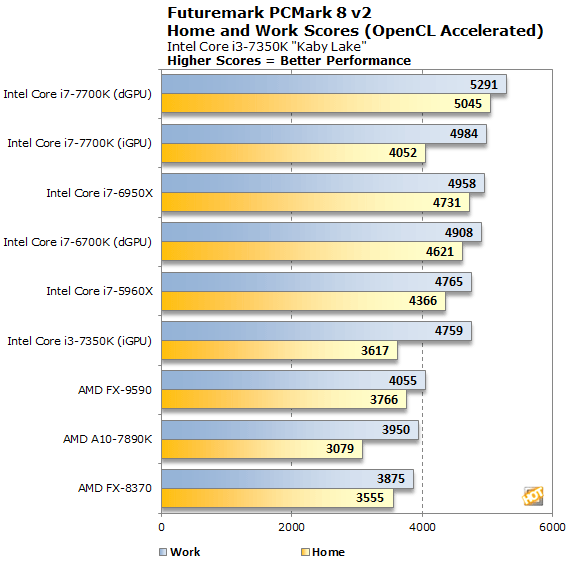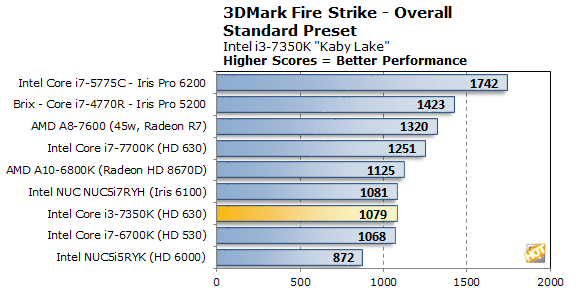Overclocking Intel Kaby Lake Core i3-7350K
Stock Core i3-7350K Performance
We used the same Gigabyte Z270X Gaming 9-based test bed for the Core i3-7350K, that was employed in our Core i7-7700K review. We simply popped out the Core i7-7700K, replaced it with the 7350K and ran our tests – with one exception. For the overclocking tests, which we’ll show you on the next page, we swapped the air-cooler for a Corsair H80i v2 closed-loop liquid cooling setup.
Before we get to the overclocking though, we want to show you where the Core i3-7350K stacks up versus an array of other processors in a variety of benchmarks. So, here goes...





The Core i3-7350K's general performance is somewhat of a mixed bag. On one hand, it is a dual-core chip with less cache than its more-powerful counterparts, so it trails in multi-threaded tests like the one in Cinebench or 3DMark's Physics test. On the other hand, it has a relatively high 4.2GHz frequency, so its single-thread performance is quite good. In out custom LAME benchmark in particular, which uses one or two threads, the Core i3-7350K performs quite well comparatively.












